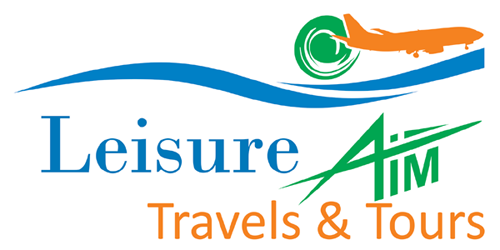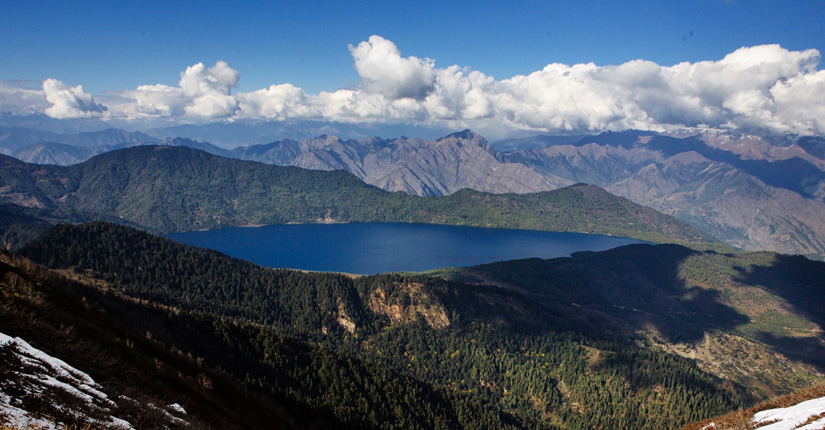Rara Lake Trekking - 13 Days
Highlights
- Visit Biggest and deepest lake of Nepal, Rara
- view of snow-capped Himalayan peaks
- Rara National Park with pine, spruce and juniper forest
- Watching different varieties of birds during the trail.
- Natural splendor, "untouched" villages, blissful quiet environment
- Boating in Rara lake
- Exploring an isolated and mysterious beauties of remote Nepal.
- Visit UNESCO world cultural heritage sites of Kathmandu Valley.
Overview
Rara is famous for its large species of birds and animals around the jungle, with the largest lake in Nepal, Rara Lake (3,062 m). Rara National Park which is the smallest but one of the beautiful national parks in Nepal which is rich in its natural vegetation. Rara region is calm which is surrounded by different forests which are known are the paradise for bird watchers. The Rara Lake Trekking through the remote wilderness of western Nepal gives you wonderful experiences of nature. The tour passes from the beautiful mountains airstrip of Jumla after flying from Kathmandu.
The trail passes through the different green countryside. The Rara Lake Trekking through the journey offers unusual glimpses of a culture and beautiful sceneries which are unique and quite different from the other parts of Nepal. Thee beautiful altitude lake, Rara Lake is surrounded by alpine meadows and forests of pine, spruce, and pine with the background view of the magnificent snow-capped peaks of the Himalayas. The entire route passes through a beaten trail that involves crossing Ghurchi Lagna pass which is situated at the height of 3,450 m towards the Rara Lake. You need to cross few ridges around 3,000 m while hiking on the back to Jumla. Anyone with average physical fitness can trek the Rara region and explore the exciting views of the natural vegetations and cultural villages around.
Day by Day Itinerary
As soon you arrive in Kathmandu, a representative will pick you up and transfer you to a hotel. We’ll discuss the tour later. In the evening, you’ll be served special dinner which introduces Nepali food culture.
We fly to Jumla and trek to Charya Chaur, a beautiful meadow set amongst pine trees.
The path becomes steeper as we ascend to the Danphya Langa Pass where we will get views of Patrasi Himal (6,860m) and Jagdula Himal (5,785m). We weave our way down through forests of spruce, birches, walnuts, bamboo and rhododendrons, periodically emerging into idyllic clearings and hanging valleys. We may even spot the Nepali national bird, the colourful Himalayan monal. We then head down to cross the Sinja Khola (river) and follow it downstream through potato and wheat fields before camping by the Lah Gad stream just below the village of Bumri and its adjacent marijuana fields.
We ascend past Bumri, go over a ridge into a side valley, drop to cross a stream and then climb to Bhara, a Tibetan style village amidst wheat fields. From here we climb to a perfect camping place near Bulbhule with a bubbling spring and shady pines.
We continue to gently ascend to an assortment of chortens, cairns and prayer flags at Ghurchi Lagna, a 3,450m pass. From here there are views of the Mugu Karnali Khola and distant snowy peaks on the Tibetan border. The trail now follows the trade route to Mugu through the Mandu Valley dropping precipitously through spruce forests to 2,900m. Here we take an inconspicuous left fork, then walk through the pine forests before descending to the Jhyari Khola at 2,400m and on to Dhotu. We then ascend to the Thakuri village of Jhyari set amongst a picturesque grove of cedars. We continue to climb through cedar forests until we reach a large meadow on a ridge (3,050m) with our first views of Rara Lake. We will now take about 2 hours to descend and walk round the lake to the campsite.
We have 2 days to explore this stunningly beautiful area. With no (domesticated) grazing animals allowed in the park the woods have reverted to their natural state and are alive with birds and rhesus and langur monkeys. We might also spot red panda, red bear, musk deer, Himalayan tahr, serow, goral and wild boar. At the lake we will see otters and the lake itself is an important site for migratory waterfowl. One day includes making an obligatory circumvention of the lake, a path (13km) has conveniently been built. Explore the now deserted villages of Rara and Chapra with their overgrown temples.
unfortunately we must leave this paradise and move on. We follow the Nisa Khola before ascending up a hill through pine, spruce and rhododendron forests. We then cross a meadow to reach a ridge at 3,660m and from here we can look back for a last view of Rara Lake. The track then skirts the head of the valley to the crest at Ghurchi Mara (3,720). There is now a choice of 2 routes, one short and steep, the other, which we will follow is longer but more engaging. We descend into the Ghatta Valley toward Gorosingha, where there are several camp sites in a lovely grassy valley.
We follow the Ghatta Khola downstream past Botan and then track the Sinja Khola through a more densely populated area to the historic village of Sinja. (5 hours).
We cross the Sinja Khola and trek up the Dhobi Khola across a series of log bridges and through forests of pines, birches and oaks interspersed with scattered houses and barley and corn fields. From Chala Chaur, a meadow at 2,900m, the path climbs steeply to Jaljala Chaur, a huge meadow full of grazing horses. (6 hours).
We continue to climb through another meadow just below the ridge at 3,510m. We contour round the head of the valley and eventually rejoin our journey in at Charya Chaur. We then proceed back down to Jumla. (4 hours).
Today, our tour comes to an end. A representative will help you with your final departure.
What's Included?
- Trekking Permit for your related trip
- Trekkers’ Information Management system (TIMS) card
- Professional English speaking guide with porter, 2 trekkers for 1 porter (1 porter carries 20-25 kilograms of luggage)
- Salary, food, accommodation and Insurance for Nepali staff
- All meals three times a day (breakfast, lunch and dinner) during the trek
- Accommodation in teahouses (lodges) during the trek
- Bus tickets (Tourist Bus or Public Bus)
- Rescue Arrangements for emergency cause [If you have any problem during the trek, we provided rescue service but paid by your insurance company or need personal insurance]
What's not Included?
- Flights tickets from Kathmandu
- All bar bills during the trek [soft, hot & alcoholic drinks]
- Private vehicle for the long drive
- Tips for staff (Guide, Driver & Porter)
- Hotel accommodation Kathmandu and Pokhara
- Lunch & Dinner in Kathmandu and Pokhara
- Travel insurance
- Hot shower, Battery Charge, Wi-Fi, Heater Charge and your personal expenses,

